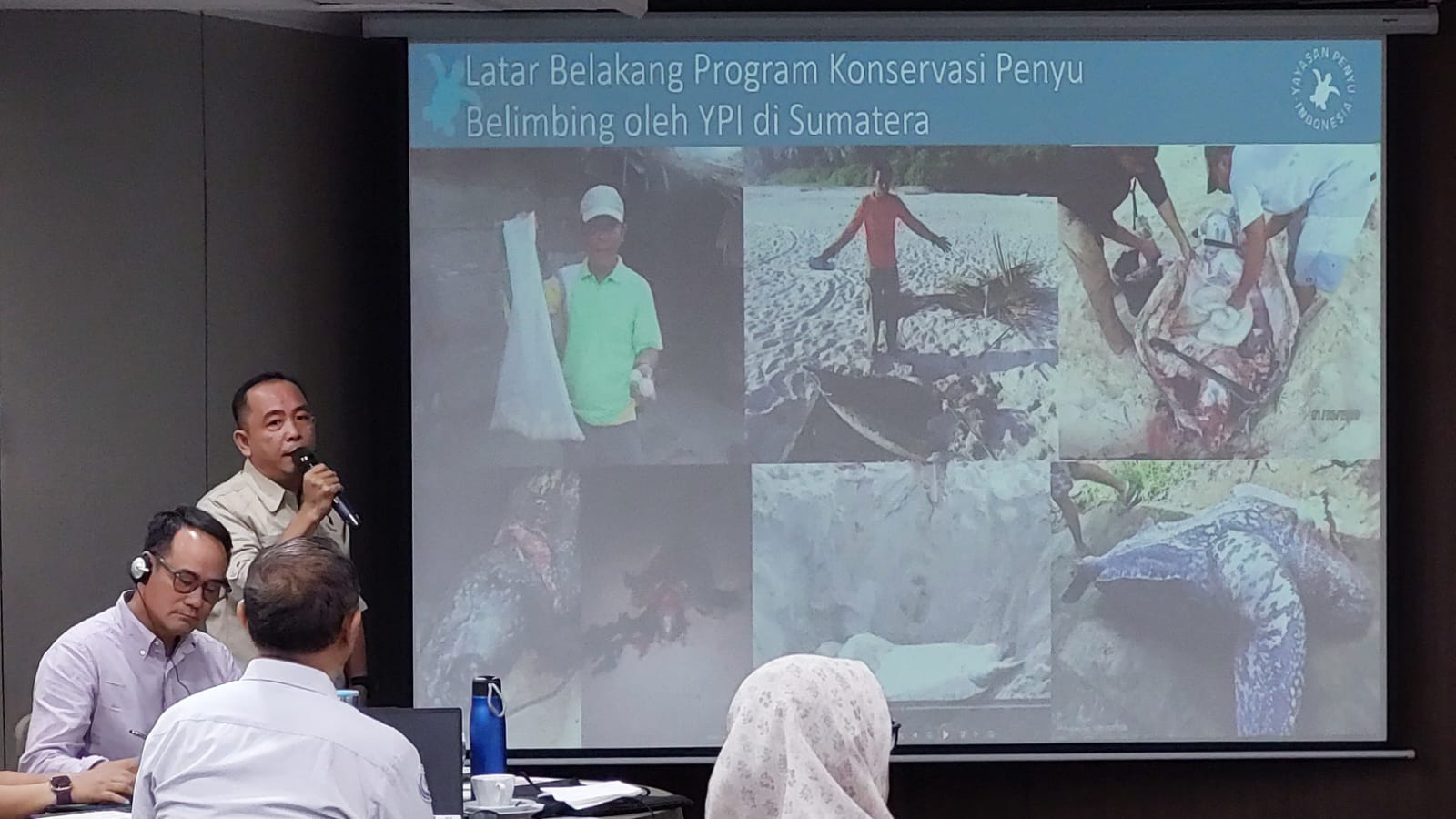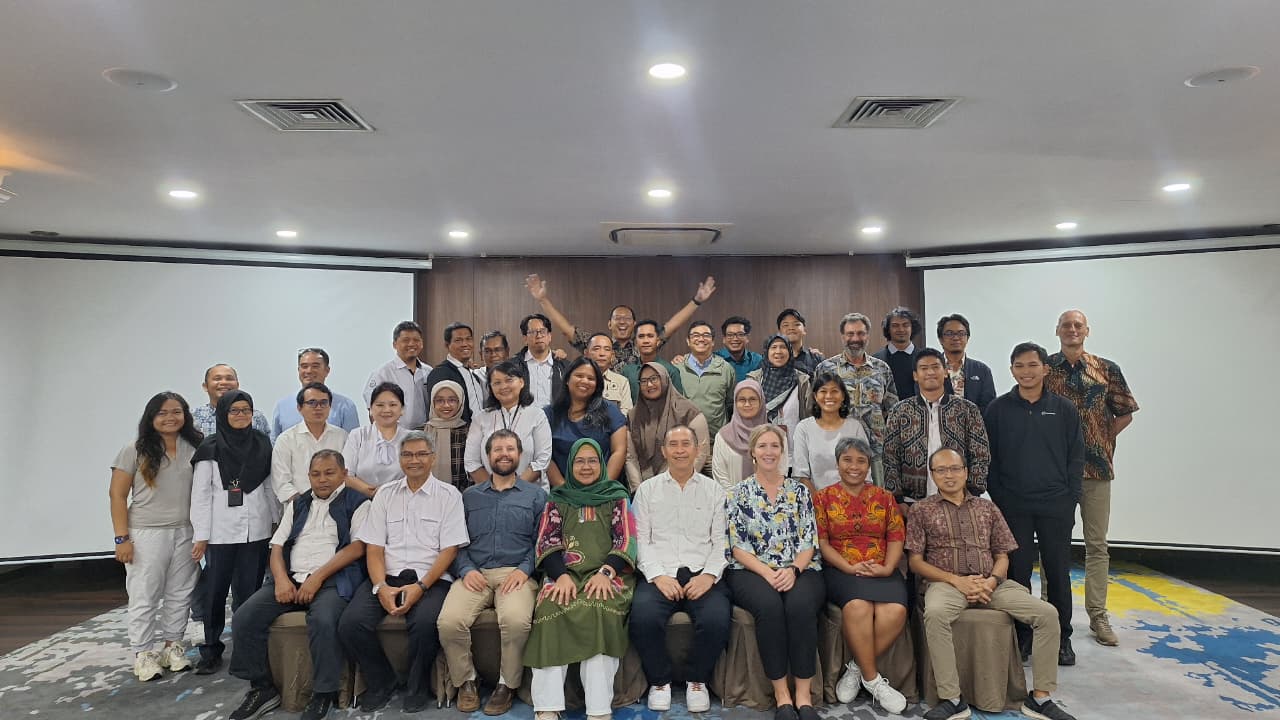Jakarta, September 2025 – The Indonesian Leatherback Sea Turtle Conservation Network Meeting was held at Hotel Gren Alia Cikini, Jakarta on September 9–10, 2025. This event was organized by the Ministry of Marine Affairs and Fisheries of the Republic of Indonesia (KKP RI), bringing together various national and international institutions committed to sea turtle protection, particularly in Indonesia. From NOAA (National Oceanic and Atmospheric Administration), several experts attended, including Summer Martin, John Wang, Michael Liles, and Peter Dutton. Yayasan Penyu Indonesia was represented by Program Director Meriussoni Zai. In 2023, YPI established a conservation network for the Northeast Indian Ocean leatherback turtle subpopulation through the EIOLA (East Indian Ocean Leatherback Alliance).

Leatherback sea turtles (Dermochelys coriacea) are the largest sea turtles in the world and among the most endangered. These giant sea creatures can grow over two meters in length and weigh more than 500 kilograms. Indonesia serves as a critical habitat for feeding and nesting, placing a significant mandate on continuing conservation efforts.
The Sea Turtle Protection Roadmap
The event opened with a general presentation from the Directorate of Species and Genetic Conservation of KKP RI on the 2024–2029 National Plan of Action for Sea Turtle Conservation (NPOA). This serves as a five-year roadmap for Indonesia in protecting sea turtles, with the leatherback as a key focus. The NPOA emphasizes that leatherbacks are in a critical state, requiring serious and measurable efforts. These include protecting nesting habitats, addressing bycatch threats (sea turtles accidentally caught by fishers), and advancing genetic research to understand migration routes and population structures.
Importantly, the NPOA stresses collaboration. Sea turtle conservation is not solely the government’s responsibility but must involve universities, research institutions, NGOs, coastal communities, and even international partners. With the NPOA, all stakeholders now share a common reference to ensure conservation efforts are not fragmented but complementary.
Stories from the Field
Participating organizations presented their conservation efforts across program areas. Universitas Papua (UNIPA) shared experiences from Southwest Papua, while WWF Indonesia highlighted work in Maluku. Yayasan Penyu Indonesia and Ecosystem Impact presented their protection initiatives in Sumatra. This session also explored how coastal communities can foster a sense of ownership and serve as the frontline of conservation.
Additionally, there was a session on genetic research of leatherback sea turtles presented by BRIN, UNIPA, NOAA, and Bionesia. The first day concluded with a plenary discussion, bringing together participants in an open Q&A session to align perspectives from diverse backgrounds.
Science and Global Collaboration
On the second day, NOAA experts shared insights on leatherback sea turtle population modeling, explaining the species’ vital role in maintaining marine ecosystem balance. They also discussed bycatch issues and fisheries monitoring with new technologies, highlighted the role of regional fisheries management organizations (RFMOs), and introduced emerging genomic tools for sea turtle genetics research.
WWF Coral Triangle presented the ShellBank initiative, a genetic data bank enabling researchers to trace sea turtle origins, as well as the Blue Corridors program, which aims to create safe migration routes in the high seas. The event concluded with discussions on continued coordination and concrete next steps to strengthen the conservation network.
Follow-Up Plans
The meeting did not end with discussions but produced a series of concrete follow-up plans. A top priority is compiling more comprehensive and systematic data, including records of bycatch, strandings, sightings, nesting, and genetic information. This data will be gathered from universities, local governments, conservation partners, and community groups.
To ensure effective coordination, the network agreed to develop a leatherback sea turtle conservation roadmap and form a small forum for ongoing discussions. Existing genetic data will be identified and further developed to inform policy. A structured mechanism for managing leatherback sea turtle genetic resources in Indonesia will also be prepared.
Several group leaders were appointed to coordinate efforts: Deasy Lontoh (UNIPA), Ranny Yuneni (WWF), Iman Wahyudin/Prabowo (KKP), and Andreanus Sembiring (Bionesia). The working group is also supported by NOAA experts: Peter Dutton on genetic collaboration, Summer Martin and John Wang on bycatch issues, and Michael Liles on regional-level cooperation.
With clear structures, strong data, and cross-institutional collaboration, this conservation network is expected to become a driving force in saving the leatherback sea turtle—an ancient species that has lived since the age of dinosaurs—while ensuring Indonesia’s seas remain healthy for future generations.



